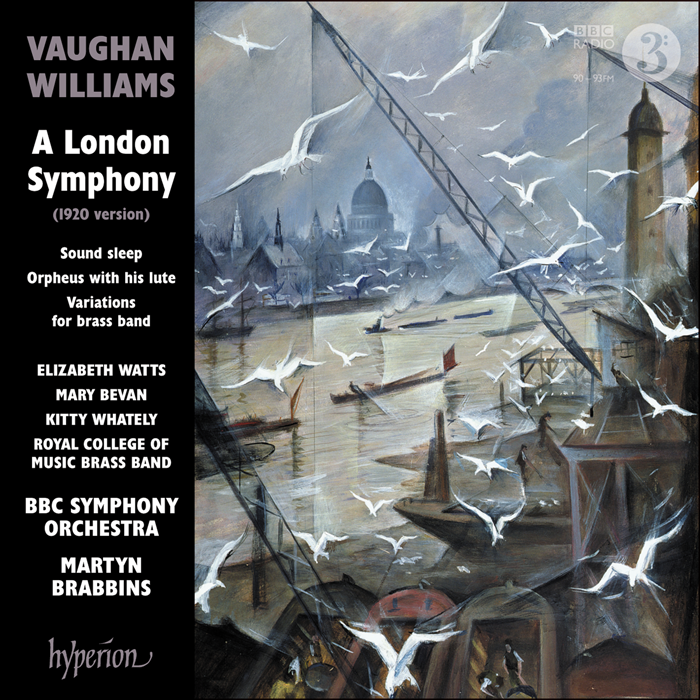Vaughan Williams: A London Symphony & other works
BBC Symphony Orchestra, Martyn Brabbins (conductor)
CDA68190
Vaughan Williams’s London Symphony (the composer’s favourite of the nine) makes a rare appearance in its 1920 first publication. Three lesser-known works complete a highly desirable programme, while Martyn Brabbins and the BBC Symphony Orchestra understand how this music should be played like few others. This is mandatory listening.
Behind The Cover
It was in response to questions about the 'meaning' of his London Symphony that Vaughan Williams referred to the closing pages of H G Wells's novel Tono-Bungay, which had been published in 1909, a few years before the symphony's composition. (In the novel, 'Tono-Bungay' is the name of a patent medicine—of dubious medicinal value—which the narrator is employed in producing and marketing.) Certainly, the novel's valedictory close, which explicitly employs the metaphor of London as a symphony, invites parallels with the mood of the epilogue of the last movement: 'Light after light goes down. England and the Kingdom, Britain and the Empire, the old prides and the old devotions, glide abeam, astern, sink down upon the horizon, pass—pass. The river passes—London passes, England passes ...'
And yet the symphony is surely as much a celebration of a thriving city as an elegy for England. The cityscapes which Christopher Richard Wynne Nevinson painted throughout the 1920s and 30s (Paris and New York, as well as London) are a striking combination of Futurist and Cubist elements in predominantly realistic settings, and his vivid depiction of the Thames in winter—a turbulent skyline of gulls, boats and cranes, with the iconic dome of St Paul's looming in the background—perfectly matches the teeming activity of VW's musical canvas, besides being contemporary with the symphony's complicated genesis. It also seems to complement Wells's depiction of the area around London Bridge: 'the great warehouses tower up about you, waving stupendous cranes, the gulls circle and scream in your ears'.
Towards the end of his life, RVW admitted that the London Symphony remained his favourite of the nine. The symphony has been lucky on record, but Martyn Brabbins's superlative account (one of the very few to use the 1920 first publication, with subtle differences in the second and fourth movements) would surely have confirmed his opinion.

